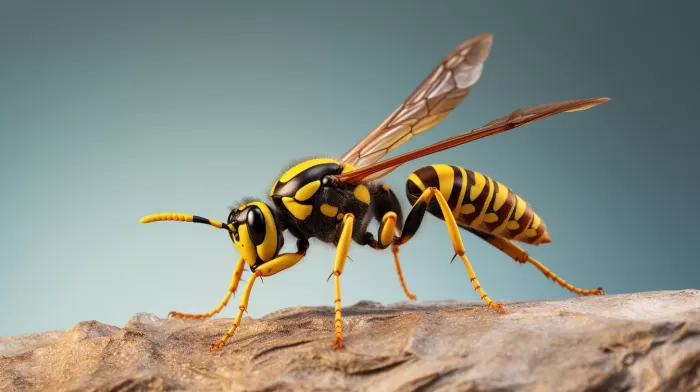As the temperature begins to rise and the frost of winter melts away, a dangerous health threat lies just around the corner, endangering the lives of one in 20 Americans. Allergic reactions to insect stings, particularly those from the yellow jacket, are on the rise. However, with the right precautions and awareness, you can avoid becoming one of the 500,000 Americans who will rush to the hospital this spring and summer.
The increasing number of allergies to insect stings is alarming and no one knows the exact reason why these allergies are becoming more common in the United States. But first, let’s look at exactly what an allergy is and why some people react more severely to insect stings than others.
Understanding Allergies
An allergy is the body’s immune response to a foreign substance, known as an allergen. Some individuals have immune systems that overreact to particular allergens like pollen or pet dander, which cause a response known as an allergic reaction. Insect sting allergies are a result of the body’s hypersensitivity to venom.
There are generally two types of reactions to insect stings—local and systemic. Local reactions involve symptoms such as swelling, redness, and itching around the sting site, while systemic reactions are more severe and can affect the entire body, potentially leading to anaphylaxis—a life-threatening allergic reaction causing a drop in blood pressure, difficulty breathing, and swelling of the throat or tongue.
Immunotherapy and Prevention
For those who experience severe allergic reactions to insect stings, there is hope. Immunotherapy, often referred to as allergy shots, can provide relief and even help prevent serious reactions in the future. This treatment involves receiving small doses of venom over time, which helps the body build up immunity to the venom.
Although immunotherapy does not always cure insect sting allergies, researchers like David Golden, M.D., confirm that “venom immunotherapy can almost always prevent severe reactions to stings.” Additionally, this treatment often provides long-lasting immunity even after the therapy is discontinued.
In addition to immunotherapy, taking precautions and being aware of your surroundings can greatly decrease your chances of suffering from an insect sting. The American College of Allergy, Asthma, and Immunology (ACAAI) recommends the following tips to prevent stings:
- Wear long pants and sleeved shirts when gardening or spending time outdoors.
- Avoid walking barefoot.
- Be cautious of insects when consuming or handling sweet food and beverages outdoors.
- Refrain from using strong-smelling perfumes, hairsprays, or deodorants that might attract insects.
- Opt for neutral-colored clothing without bright patterns or floral designs.
First Aid for Insect Stings
If you’ve been stung by an insect, promptly taking action can help alleviate discomfort and prevent complications. Here are some steps to follow after an insect sting:
- Remove the stinger: Use the edge of a credit card or similar object to gently scrape the stinger out of the skin. Avoid using tweezers or fingers, as this may squeeze more venom into the wound.
- Clean the wound: Gently wash the affected area with soap and water.
- Apply a cold pack: Reduce swelling by applying a cold pack or ice wrapped in a cloth to the sting site.
- Take an antihistamine: Over-the-counter antihistamines, such as Benadryl, can help reduce itching and swelling.
- Use pain relievers: Over-the-counter pain relievers, such as ibuprofen or acetaminophen, can help alleviate discomfort.
If you experience symptoms of an allergic reaction or anaphylaxis, such as difficulty breathing, hives, or swelling of the face, lips, or tongue, call 911 or seek immediate medical assistance.
By being aware of the risk, seeking out immunotherapy if needed, and taking preventative measures, you can enjoy the beauty and warmth of the great outdoors without the fear of a potentially fatal insect sting. So, get out there and make the most of the warmer weather—but don’t forget to take these precautions to heart.



